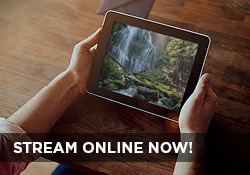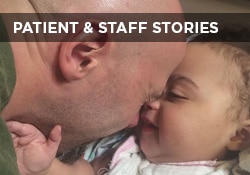This website uses cookies so that we can provide you with the best user experience possible. Cookie information is stored in your browser and performs functions such as recognising you when you return to our website and helping our team to understand which sections of the website you find most interesting and useful.

Susan E. Mazer, Ph.D. Blog
Thoughts and ideas on healthcare
Hi, and welcome to my blog! I'm Susan E. Mazer -- a knowledge expert and thought leader on how the environment of care impacts the patient experience. Topics I write about include safety, satisfaction, hospital noise, nursing, care at the bedside, and much more.
Pain Management: What Do We Do When We Run Out of Opioids?
June 29, 2018
Now that production of injectable opioids in the U.S. has stalled because of manufacturing problems and a regulatory limit that cut production by more than 25%, clinicians at hospitals are under even more pressure to find alternatives for pain management.
Covered alternatives to opioids, however, may be hard to find. According to a recent study by the Johns Hopkins Center for Drug Safety and Effectiveness, by limiting what alternatives they would cover, insurers may also be partly to blame for the opioid epidemic.
“While private insurers, Medicare and Medicaid policies took steps to combat the opioid epidemic, they often missed opportunities to encourage patients to take safer, more effective alternatives to prescription opioids,” Modern Healthcare reported this past week.
When The Joint Commission addressed and rewrote its own pain management standards, it stated that patients should not necessarily expect to be pain-free. Rather, they should be educated as to what they can reasonably expect, be offered non-pharmaceutical and pharmaceutical strategies, and be made aware of what impact their pain and the pain strategies might have on their activities of daily living.
The question about what else can be done for pain management can be answered in many ways.
Positive Distractions Can Make Pain Manageable
Acute pain can be eased or made manageable by using the power of patients’ attention to lessen their pain through positive distractions.
Simply put, if patients’ attention is drawn away from their pain, the neurological pathways are closed, in part or whole. This was first theorized by Psychologist Ronald Melzac in 1968 and has been researched and proven many times since.
More specifically, “attention” is voluntary, what we naturally are drawn to, while “focused attention” is involuntary, what we have to do (like balance our checkbooks or review our kid’s homework). It is the power of positive distraction that draws in a patient without forcing them that is the most effective.
The concept of “positive distraction” has also been validated by the evidence-based design process, in which patient rooms are designed and furnished in ways that provide a variety of environmental elements intended to uplift and serve as refocusing the patient away from their suffering.
Using Nature
In his theory of Supportive Environments, Architecture Professor Roger Ulrich suggests that providing access to nature with social support and minimal environmental stressors helps create optimal environments for managing pain and healing.
The many hours that patients spend alone allow them to think only about their pain and circumstances. Expectancy, anticipation, ruminations about pain makes it all worse. It is during this time that providing engaging distractions that are positive is critical.
Distractions that draw patients in enough to act as an analgesic require voluntary engagement and are most effective when they are multi-modal, meaning more than one sense is engaged. For example, researchers found combining visual and auditory stimuli like nature and music worked more effectively together in reducing pain than either one alone.
Other studies have shown that non-painful stimuli can lessen the pain, too. That is why we intuitively rub our arms, hands, tummy — whatever hurts — and it feels better.
Many Ways to Provide Positive Distraction
There are many ways to provide positive distractions to relieve patients’ pain, anxiety, and fear.
One challenge which all of us have is that without variety, what was interesting becomes uninteresting if nothing changes.
Digital fish tanks or fireplaces, for example, may work for a short time as a positive distraction, but patients habituate to the pictures and sounds, thus minimizing or canceling their effectiveness.
For that reason, among others, The C.A.R.E.® Channel is produced to provide both consistency and variety, offering multiple scenes in each segment that keep the patient’s mind moving, curious, and engaged.
C.A.R.E. is produced specifically to serve the patient’s need for variety, renewing interest and engagement by the viewer. The music follows and supports the visual image.
The Pain Management Network has some good resources for pain management strategies, including a set of distraction techniques aimed at youth to help shift their attention away from pain. It points out that variety is best and that these distractions can be creative adventures.
The National Nursing Home Quality Improvement Campaign also has an ample list of evidence-based non-pharmaceutical pain management strategies that is worth reviewing. Each of them to some degree uses the positive distraction factors directly or indirectly.
Here is a partial list of positive distractions that can be used to help patients take their mind off their pain:
- Music and nature programming
- Guided imagery
- Movies that fully engage the patient
- Humor
- Artwork and art therapy
- Pet therapy
- Virtual reality immersive experiences
Of course, visitors and conversations help, too.
These alternative pain management strategies are not new to healthcare. Encouraging and advocating for non-drug solutions to acute or chronic pain is now in front of us as a way to reduce, if not minimize, the use of opioids.
But now more than ever it is critical to revisit them and empower patients to help manage their own pain and ease their suffering.
More About Pain Management & Positive Distractions
Please check out my white paper, “Pain Management and C.A.R.E.,” and a recent article on “Pain and the Patient Environment” in the Asian Journal of Hospital and Health Care Management.
P.S. If you like this post, please do me a favor and share on LinkedIn, Twitter, Facebook, etc. Also to get automatic notices when a new post is published, subscribe (upper right). No spam – just great content. Thanks!











